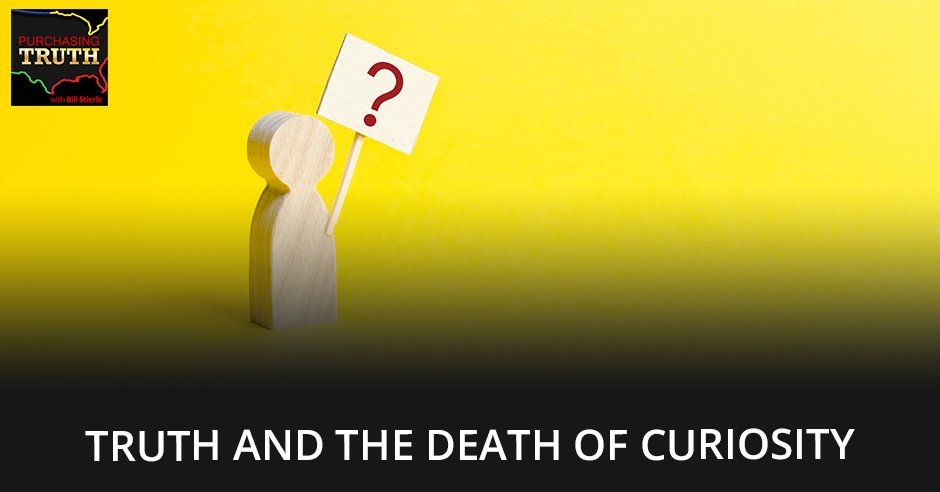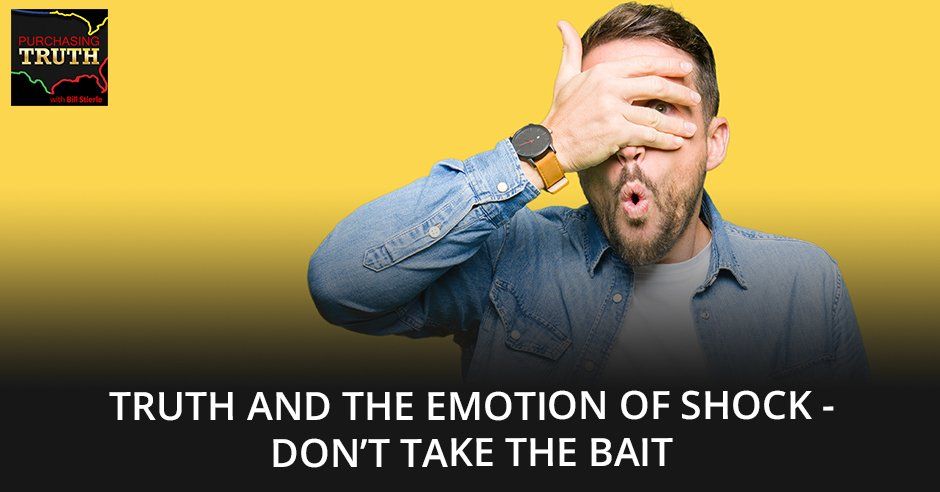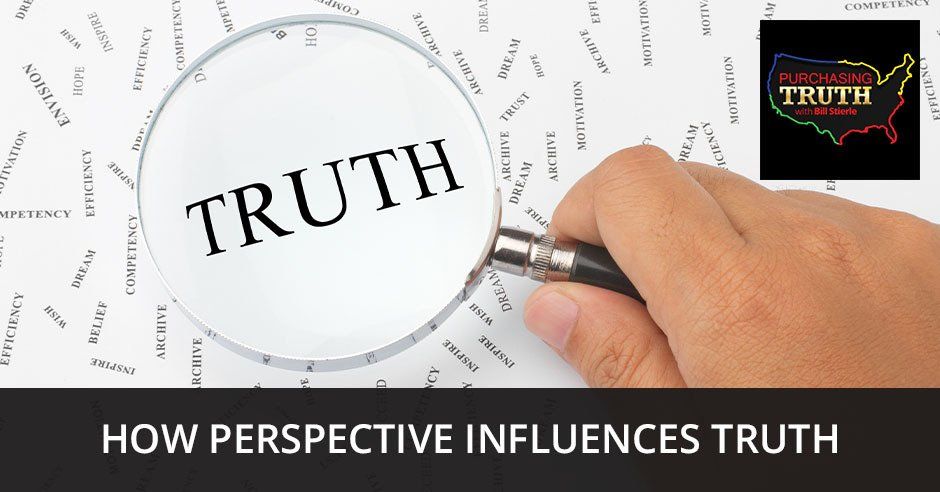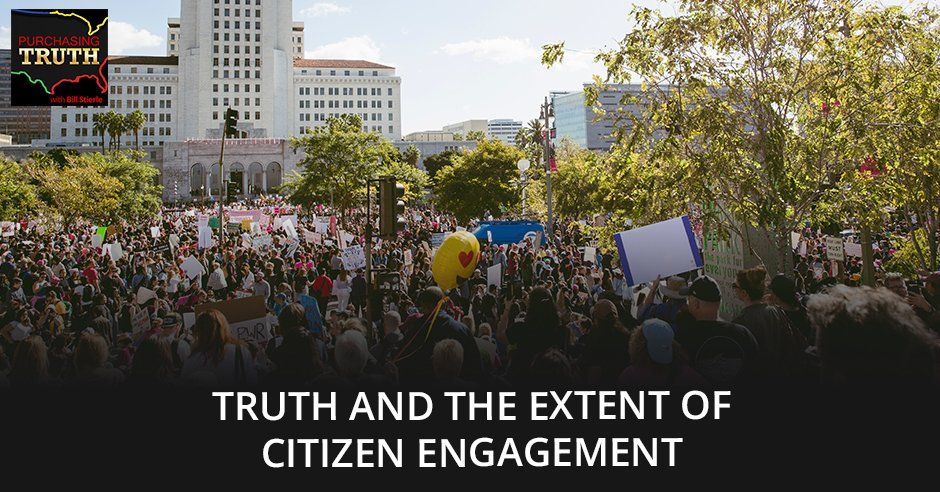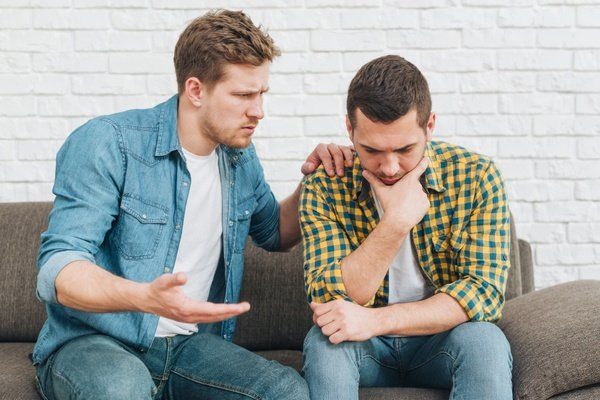Truth And The Extent Of Citizen Engagement
Subscribe Today!
The recent incident of the 17-year old from Illinois who killed a number of people in Kenosha, Washington, has left many shocked. Bill Stierle and Tom take up this current event that presents some pressing issues we’re facing in this country and talk about truth in relation to citizen engagement. When should citizens engage? How much is too much engagement? Where do you draw the line? Bill and Tom try to answer these questions and more, touching on the topics of gun violence, police lives, parenting, and racial biases.
---
Watch the episode here
Bill, last time we talked about the seventeen-year-old from Illinois who went to Kenosha, Wisconsin with an AR-15-style assault rifle where he ended up trying to align up with the police and provide some law and order that he felt he needed to provide. He ends up killing a few people and wounding others. That was shocking, but there’s a bigger issue here that is important to go over. We have been talking about it and that’s about citizen engagement. When should citizens engage? How much is too much engagement? Where do you draw the line?
This is tough because when that young man met his own need for identity, contribution, service, or love for his country, notice I started with his needs and it’s going to work on the readers immediately be like, “How did you jump to compassion for that guy?” Especially because he took two people’s lives and significantly changed the landscape and the environment of that city as well as his own family and his own experience of being a double murderer, two homicides. His life was prosecuted and put in jail. It is one of, “I was following contribution. I was providing service to my nation. I was doing what I thought I was supposed to do as a young man. I’m ready to fight for this country.” All of a sudden, he’s in jail. It’s like, “I’m missing a piece of information.” That’s a part of the things that a seventeen-year-old needs to learn without getting into this level of violence and death.
There is going to be a lot of sadness, loss, and mourning for the people that lost their loved one and severely hurt and even traumatized in the surroundings about this young man doing that. We’ve got to do a better job of society and community to go like, “You’re in Illinois. They’re up there. That’s their community. They’ve got to fix and heal their community. You don’t get to come up there and help them protect themselves. That’s their job.” This is a seventeen-year-old that wants to enroll in the military, who wants to fight for the country yet he’s doing it in a way that’s not in alignment with service to the country. Regrettably, those lines have been blurred. This is a hard one.
It is hard. It brings up the question of what laws apply, who do they apply to, and how did he see that maybe he was applying the law? That he was playing the role of police or assisting the police providing backup, whatever you want to call it. That’s scary. This also brings into question the right to bear arms. Many people were like, “There’s the Second Amendment. We have the right to bear arms. We have the right to protect ourselves and protect our fellow citizens and all that.” That may be but at the expense of what? He got into altercations, disagreements to put it mildly, with others and fired on them and took their lives. It wasn’t his charge to have discharged law and order, was it?
No, it’s not his charge. He didn’t take an oath to that. He didn’t follow the social norms of going through police or military training. He’s just working on his own independent decision-making in order to enact what he thinks independently that he’s fighting for. There’s this tension between, are we going to reestablish our communities in a healthy way or are we going to keep going down this path of being individuals? “Everyone’s out for themselves and I’m going to be competitive. I am going to get whatever I can from another person. If they do something that is outside of something I would like them to do, they’re wrong. I still get to have that. My say is the one that works because I’m autonomous of this.”
This is not going to be elegantly stated, but there are many ways that this situation is messed up to put it plainly.
There's definitely a race bias issue in America. We need to be a better America than this.
CLICK TO TWEET
It’s the safest way to talk about it. This is messed up. There are a lot of layers here, societal layers and family layers. There are people saying, “Mom needs to be arrested as an assistant to murder.”
If you’re going to be in charge of law and order, are you going to try and seek justice according to the law? Here are a few of the many things that are mixed up in this. This boy, Kyle Rittenhouse is seventeen years old. Seventeen-year-olds are not allowed to have a license to possess a firearm on their own. It doesn’t mean they’re not allowed to fire them in certain situations that are range with the parent and all that sort of thing, but they have to be with a parent and in a very controlled situation. Clearly, this kid took a firearm that was not his, even if he knew how to use it. He crossed state lines from Illinois into Wisconsin. There’s a complication that has legal ramifications.
No matter how you slice it or try to empathize with any of what he did, he committed murder with it. He then crossed state lines again going back into Illinois. That has other consequences and because he’s a minor, the parents are liable, even though they had nothing to do with it. As I understand it, they had nothing to do with encouraging him to go and participate in this thing in Wisconsin. They do have a legal responsibility and may very well be brought up on charges themselves. That doesn’t even begin to compare to the terrible tragedy of the lives that were lost. That’s why I say this is messed up every which way you could probably a few more ways, I’m not even thinking about now.
I appreciate this conversation because you’re talking about what responsibility and how we have the ability to respond to this. A parent takes a kid to a shooting range where having some general sense of trust and some looking to have the parent to have a very protective, integrated conversation with the kid to say, “You’re firing this gun. There’s a level of responsibility here that goes with that, at a level to society that goes with this. This gun is to be shot in these two different situations only.” That conversation is not even in alignment with parents. I’m blushing to all the different Facebook pictures of him and standing next to his mom and being dressed up in a uniform and proud. That’s an identity he is identifying with. He is a part of that identity of doing that.
There’s not a bad part of that identity, but there can be a dark side to that identity is that, “I’m the law-enforced person. I can’t do anything wrong. All these other people are bad and I need to police and corral them and even harm them if they don’t do what I tell them to do.” Even as I say that you’re going to get upset and unsettled because that’s going to trigger into several times as we have talked about it, don’t some police do that same thing? They do some subdue. We don’t and have not measured, or haven’t taken charge to measure our morality and our ethics fully in certain police departments in certain states. We were talking about the article about white supremacists and militias that have infiltrated the US police departments.
It doesn’t mean that’s a sweeping global thing. It means that’s a portion of truth that hasn’t been discussed, the portion of truth that maybe needs to be discussed and expanded to say, is there morality in this piece? Are there clean guide rails put up in order to balance the protection of police lives, for sure? Also, how are they acting towards the people in their charge? How are they engaged in that process? Those needs are important for us to discuss. You’ve got to get some balance here. I know I said a lot, but you can see what your body’s been doing. I get upset talking about it because that’s the right feeling.
I do too. As you were talking about some of that, I was thinking about some common friends we have who are ex-military, a married couple, former US counterintelligence officials. We don’t have to name them here, but they have a 10 or 11-year-old daughter. I have seen the photos and Facebook posts where the father is taking the daughter to a gun range and teaching this ten-year-old how to shoot. I also know that they’re responsible parents and they are teaching gun responsibility and safety and what is not only legal but what is moral and proper. Some people might say, “A ten-year-old should never be shooting a gun.” I don’t know if I agree with that. I shot a gun from the time I was ten years old, but it was on a range in a controlled environment and we’re being taught responsible gun use. Hunting and other things also took place in my youth, but there’s a big difference between that and AR-15-style assault rifle and somebody taking that onto the streets by themselves in a high tension situation. Not a lot of good is probably going to come from that.
Our mutual friends are such the most delightful, spiritual, engaged, balanced people I know on the planet. They are good friends to both of us. They have a sense and clarity of balance as military people to engage, to know where the lines are and their ethics, morals, and stability pieces are in place. I don’t have any problem with it. There’s no energy around it at all because of their need for freedom and choice in regards to how their kid is standing. The ability to create that next level of accountability and check-in to see the level of accountability that’s needed and necessary in our society to check-in. We don’t know what winds up happening is our own biases jump into the field and say, “A ten-year-old uses a gun.”
That might not be a fit for you, but for them they have a foundation to place their kid on. They have some strength and ability to stay in that space. What we don’t have and the thing that makes this discussion vibrant is, are we, as individuals, going to start looking to the community, city, state, nation as the larger outreach of ourselves? Are we going to continue to talk about being divided individuals that can’t get along? Are we going to keep doing, “I guess individuals aren’t going to get along?” Is that the message that you would like to convey? Are you going to convey an escalated message that most individuals don’t get along? That statement is not true because most individuals do get along. How do we know this to be true? They’re driving on the freeway together. They get along because they’re not running into each other and popping up. All of the drivers aren’t great drivers.
Not at all.
We tend to get along. If we’re doing a push, then it’s 10% of drivers are awful. Maybe 5%, 15%, if you want to do a larger push, but the evidence is that there are car wrecks every once in a while, when moments of awareness drops. Our bias has to be ready and focused on the small thing to put it in proportion. If we did that, then our bias would stay in check. It would say, “There is a civilian carrying a weapon that can kill people and they’re not in uniform.” Can you see how that sits? Can you see how the bias is going to come in place? If that individual, that young man is walking in and standing next to police officers and none of them are saying anything. What bias is in place? I don’t know. I would guess about seven.
There’s a lot. You’re getting toward the big issue that I haven’t seen a lot of people talking about. Maybe you have probably read some different things. I have, Bill. What if Kyle Rittenhouse, as an individual, decided to take his AR-15, drive 20 miles across the state line to try to support in his mind, probably order on the streets, and preventing Gun Control? What if he was African-American? What happens then? When we talk about biases, there’s a reality here that a whole different reaction and result would have occurred.
The retaliation is the first thing that comes to my mind from a place of bias. He needs to be punished severely in front of everybody if he happened to be African-American. In fact, some people would even go, “His family needs to be punished the same way.” We can pull the quote of the President saying that sentence, “I know how to get rid of terrorists. You take out them and take out their entire family.” Let’s apply that in this situation. You see how the bias door doesn’t fully swing the other way. Notice how unsettling it gets to say, “No. That narrative only works to a person that has a different color skin. That narrative doesn’t work if a person’s white.” Why doesn’t that narrative swing both ways? That’s the bias we need to take. I’m not asking for the bias to work regarding the need for fairness. I am asking for equitability on both sides in regard to the position of color. We have a long way to go to exercise that bias.
I believe we do have a long way to go. This is why this year in 2020, there has been so much outrage. There have been many protests in support of all of the notable African-Americans who have made the national news beginning with George Floyd being treated, we can all admit or I hope we can, differently by our police forces than the same type of a criminal or a suspected criminal white person would have been treated. All you have to do to realize that we have a huge problem with this in America is to study the prison populations and how many more African-Americans are in prison for crimes like this than other ethnicities, certainly white or Caucasian people.
Longer time, bigger sentences, harsher punishments. The bias that sits here is unsettling.
No question, there is a big component of why more of that community is in prison and getting harsher sentences. Probably also because of the economic disparity that exists in America, where they cannot afford private attorneys as much as they get public defenders. There are lots of things that play into it, but there’s a race bias issue at the front end of this. I’m not trying to say all cops are racist. That is not at all what I’m stating here. I don’t believe that, but there certainly is. We certainly have some bias problems and there are being presented to us on a daily basis, largely because of the invention of the smartphone and every smartphone having the video camera on it. I think this has always been here. We just didn’t see it as much.
It’s been here on all these different levels. There was a time you could say when Lyndon Johnson was doing all the civil rights stuff and making everything and changing everything around there over the ‘60s, there was somewhat or a larger consensus of, “This is the right thing to do.” I’m glad that we’re able to do it now because all of that stuff was in the wake of John Fitzgerald Kennedy and his assassination, he took the public sediment like, “I have the public with me. Why don’t I fix this primary piece and get the voting in place and get these things,” because who’s going to give a pushback? They’re grieving the loss of a President. The public is on my side and saying, “We’re a better American than this. We need to be a better America than this.”
That was a big part of it. With all that stuff said, still many people are hard and fast in the way their thoughts and their mindset approaches to race and color because they have pieces of evidence. They’ve been fed messages to reinforce those pieces of evidence about others, about the person of color or person of different sexuality. They’ve been forced and force-fed. Hollywood hasn’t been complicit on this one like, “I can write the villain. Here’s the villain.” It’s then like any mugshot that you would see over the last years. That’s hard, subtle, and unsettling because there’s no discussion of moral ethics in that. It’s how big is the body count in a movie. This is the good person’s doing to fight back the forces of evil. That’s bias and that belief is real for people. They see it as something alive in their world and they reinforce it.
This is where it gets unsettling. We are into a little bit of trouble with truth and citizen engagement because Tom, we both want to protect our families. Need for safety, need for protection, we want to meet that need of ours as other families do. Both of us have a need for fairness. We would like fairness to take place with our family the way we’re treated. We would like other people to be fair to each other. Mutual respect might be a nice thing. I mutually respect you, you mutually respect me. We extend that to all the people in our view, as well as our readers. They might not like the things that we say because of the way they’ve been brought up and how they’ve seen the world. It is not been fully a fit. This whole thing is unsettling, challenging for us as human beings because we’ve got to bring a lot of compassion and understanding to where the person is with their belief structure in order to do something.
We got to start imagining something new and engage the world in a way that’s going to in our society, in a way that’s going to be more collaborative. Hopefully, not at the expense of life, the way it has been going. The question I have for you and see if we can stick the landing here is where does the outrage end? What needs to take place from it, moved from outrage, furious, angry, aggravated, irritated, annoyed, frustrated? It’s got to walk itself back down. There’s got to be a movement from the outrage because the outrage is being stoked, even false outrage is being stoked.
There’s a lot of outrage being stoked and it’s not all the primary level of outrage from the incident. There are secondary and tertiary levels here. When you see what the President is doing, talking about this, he’s trying to say, “If you elect Joe Biden, you’re going to have more lawless streets. You’re not going to have law and order. Everything’s going to descend into chaos. Look at what’s happening on the streets.” The irony of that is everything happening now and all of the videos, images, and examples of this being used are a result of Donald Trump’s America, not by America, because Donald Trump is the President and he is the leader. There are many levels in which it is being used. I have concerns that this is not going to be easily walked down, those levels you were talking about.
Also, the ability to get people to take the time to do it and let it stick. It’s got to stick.
We don’t have a leader now who’s interested in doing that. That’s the biggest problem because this needs to come from the top leadership of the country and/or of the state or the police. There are many different levels from which it could come. So far, what we see happening is Kyle Rittenhouse has been arrested. His parents might be charged. He’s being extradited in the process. He is being extradited from Illinois to Wisconsin. This is not going to make anybody feel good, even though maybe justice is being done. Some people are feeling that justice is being applied unfairly to this boy for one reason or another, then some people are going to think justice is being applied unfairly to the parents. There are gun rights issues. There are families of people whose lives were lost or wounded. There’s not going to be fairness there. It’s trying to get not even restoration here, but some resolution to this that people view as equitable, as proper as fair. There’s so much emotion wrapped all around this. I don’t think there’s any way you’re going to please everybody and bring them together on this. That’s for sure not easily.
There is a way out of this to get this to the spot it needs to be to get the level of mourning and healing that’s necessary. This is not to minimize what’s happening on the people that have lost somebody. There’s got to be a way for justice and accountability to move forward. There’s got to be a measure of justice and accountability that’s at the level of which this person did something. There’s more to come about how to get to a place where we, as a society could start caring more about community. When we’re angry about something or frustrated that we’re working through the right channels in order to get those emotions out and/or move those things forward in the world that’s more healing and healthy, that could make a big difference.
We got to get to the point where peaceful protests can happen without violence taking place.
CLICK TO TWEET
You’ve got to get to the point where peaceful protests can happen without violence taking place.
If violence does take place, the appropriate response is in alignment with that action. What’s burned in my head is the one guy who is about ready to loot a store. Another protestor stood in front of this one little wavy girl. She was standing in front of this huge guy that wants to break into the store. The guy kept pushing her away, but she kept coming back around and standing there in front until finally, he gets tired. He went to the next store. He started walking down the street. He started reconsidering going like, “I can’t get in the store because I’ve got to go through one of my people to get there.” That’s the level of accountability that we need to do as a community and as a society.
I like that. That sounds good, Bill.
There’s more to come. I have some good articles about community and individualism that we can get into about how the truth can move back towards the center where it needs to. We’re not interested in taking individual rights away, but we are interested in how does the community/society/nation work together to heal itself? We’ve got to do something about that.
Yes, we do. Thanks for your perspective.
Thanks, Tom, for hosting. I appreciate it.
Important Links:
- Article – White supremacists and militias have infiltrated police across US, report says
- https://www.TheGuardian.com/us-news/2020/aug/27/white-supremacists-militias-infiltrate-us-police-report
- https://www.CNN.com/2020/08/28/us/kyle-rittenhouse-kenosha-shooting/index.html
Love the show? Subscribe, rate, review, and share!
